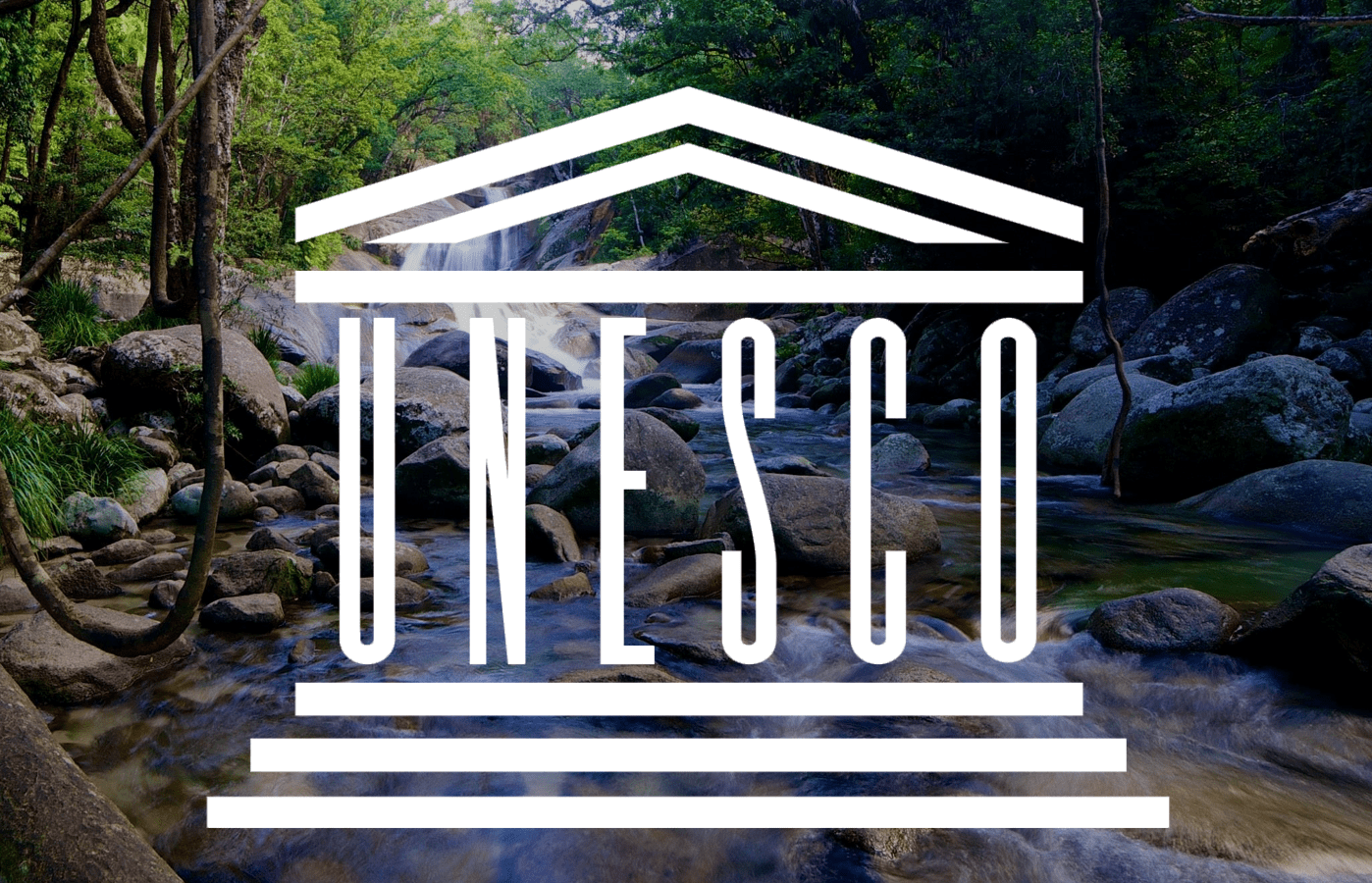Far North Queensland, the Superlative Wet Tropics & Heritage Listing – Series 1.1 Beauty

The Wet Tropics was inscribed as a World Heritage listed area in 1988. It begins just north of Townsville and runs 450km north to Cooktown and includes an amazing array of natural wonders throughout 31 national parks. We visit many of them through Barefoot Tours and this series of articles will help outline some of the important factors of UNESCO’s (part of the United Nations) World Heritage Listing and how it relates to the Wet Tropics. It is a fantastic way to garner further insight into the region and gain a better understanding as to why you must come see this region for yourself.
Series 1 of 4 – Beauty – UNESCO World Heritage Listed
Far North Queensland is renowned for having two world heritage listed areas lying next to each other. The region is famous for the Great Barrier Reef, and understandably so, but this is not the only part of the region that is famous for its exceptional natural beauty. It is also home to a region called the Wet Tropics. The Wet Tropics was inscribed as a World Heritage listed area in 1988. It begins just north of Townsville and runs 450km north to Cooktown and includes an amazing array of natural wonders throughout 31 national parks. We visit many of them through Barefoot Tours and this series of articles will help outline some of the important factors of UNESCO’s (part of the United Nations) World Heritage Listing and how it relates to the Wet Tropics. It is a fantastic way to garner further insight into the region and gain a better understanding as to why you must come see this region for yourself.
World Heritage Listing is a way in which we protect important parts of the planet for future generations to enjoy. The Wet Tropics is definitely worth protecting for our descendants. UNESCO has many criteria for listing, first and foremost it needs to be of Outstanding Universal Value to humanity. Beyond that there are both cultural and natural elements to enable a region to be inscribed. The Wet Tropics meets all of the natural criteria. It is irreplaceable and thus we protect 894 hectares of this planet displaying a huge array of biodiversity, endangered and endemic species and natural beauty. It is a living museum.
Take a day to drive around and the rugged ranges, raging rivers, breathtaking coastal scenery, wild waterfalls and some of the most superlative scenic features and it will lure you into another era, a time long since removed from most of the world. The natural beauty is second to none in this region. The escarpment of Great Dividing Range imposes itself over the Barrier Reef and beckons to be climbed. There are the fringing reefs between the Daintree and Cooktown to pull your view towards the arousing coral sea, and to see rainforest covering over the beaches astounds all.
This brings us to criteria VII on UNESCO’s list. This states that to be included, the region has “to contain superlative natural phenomena or areas of exceptional natural beauty and aesthetic importance”. The Tablelands sit at an altitude of around 800m surround by mountain ranges includes the two huge humps of Bartle Frere (1622m) and Bellenden Kerr (1593m). This region is tropical and has an immense amount of rainfall. In order to find its way down to the oceans it has carved out numerous large rivers, North and South Johnstone, Barron, Tully, and Daintree Rivers include a few. This has allowed the formation of some very intriguing and rugged topography through the region.
The formation of these rivers amongst the backdrop of the Great Dividing Range and the sensational flora is only the beginning of the beauty the region has to offer. The force of these rivers through thousands of wet seasons has carved out immense waterfalls (Josephine, Windin), and whittled away and polished many a stunning rock formation (Babinda Boulders, Mossman Gorge).
For the last 200 million years until about 13,000 years ago there have been numerous volcanic eruption around the Tablelands. These have formed some exquisite lakes (Eacham, Barrine) and phenomenal cave structures (Undara) through the region.
Due to the immense amount of rainfall in the region (averaging between 1.5m to 8m annually), the topographical disposition and cyclonic activity there are thought to be 13 different types of rainforest through the region. Each one of these has its own beauty. The Mesophyll Vine Forests, with their large indulgent leaves are my favourite, it is dense and thick and epitomises natural beauty. This is also why during every Barefoot tour one of the most repeated comments is “It’s so beautiful.” Agreed, and as far as Barefoot is concerned, it’s aesthetic importance and natural beauty are second to none.
Please continue reading about World Heritage Listing, UNESCO and the Wet Tropics in the other articles in this series to learn more. There are so many reasons why it is so imperative to protect this beauty for future generations.
